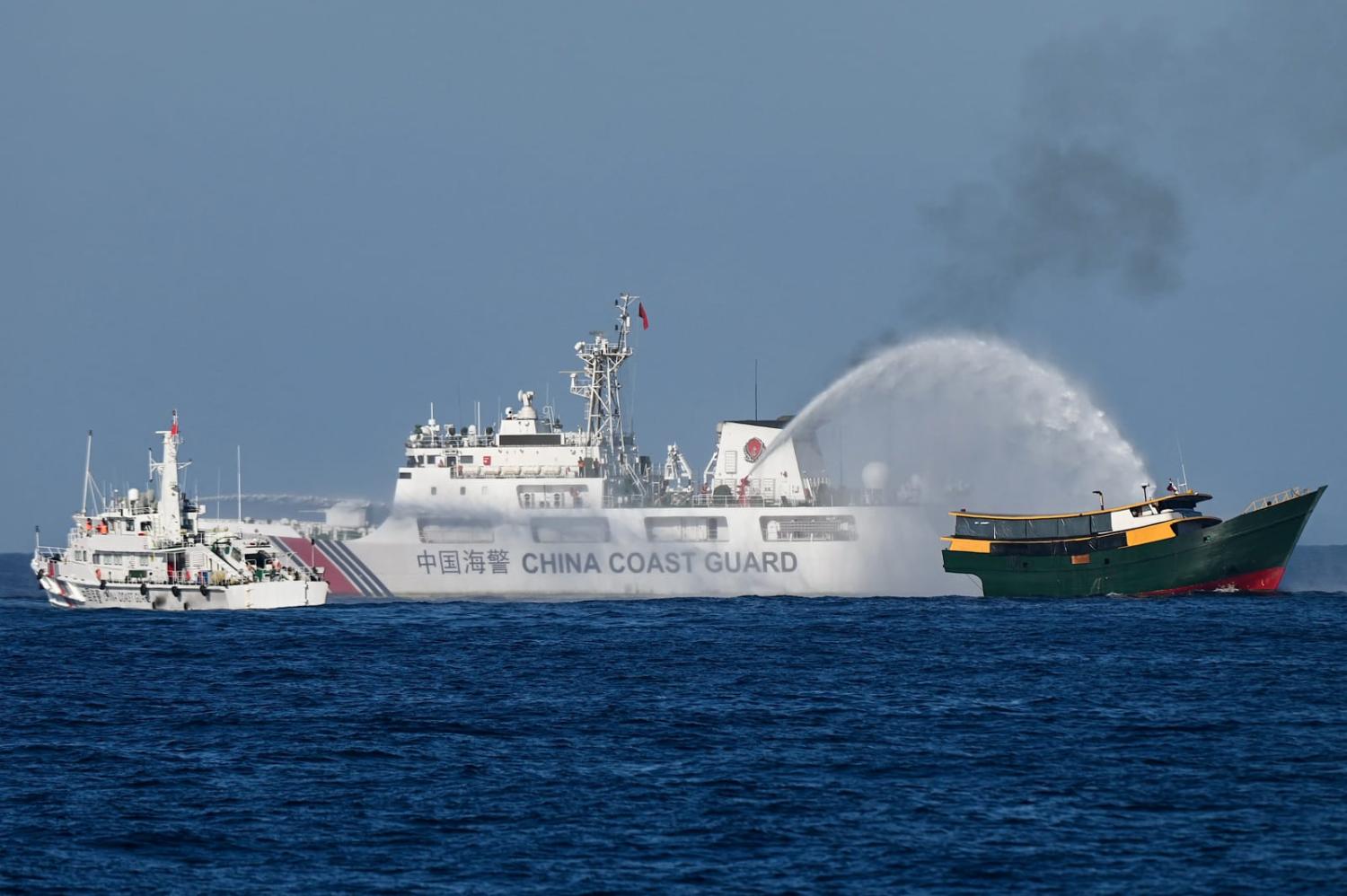Two Asia-Pacific flashpoints – the South China Sea and Taiwan Strait – stand at a critical juncture, but their connection is not always well understood.
In the South China Sea, China has ramped up its military assertiveness against the Philippines while at the same time holding out the prospect of diplomatic engagement. This approach seeks to bolster Beijing’s regional dominance while limiting the potential for direct confrontation, particularly by drawing in the United States.
Such a strategy allows room for the optimistic view that a diplomatic breakthrough, possibly mediated by ASEAN, could lead to a mutually beneficial agreement between China and the Philippines, fostering regional cooperation and stability through joint exploration and resource management.
Less encouragingly though, while China may not want a direct military confrontation, the frequency and ferocity of maritime incidents raises the possibility of sparking a wider unintended crisis. China’s Foreign Ministry Spokesperson Wang Wenbin asserted on Tuesday that “China has indisputable sovereignty over the islands in the South China Sea, and there is no territorial dispute between China and the Philippines in the South China Sea.” Declarations of this type could potentially lead to further escalation, testing US security guarantees in the region, as well as China’s willingness to back up its threats.
The Taiwan Strait, meantime, holds special significance in China’s broader maritime strategy, influencing its actions in the South China Sea. Tensions in the Taiwan Strait have historically driven China’s military modernisation efforts and doctrinal adaptations, with the present emphasis on area denial and anti-access strategies, including naval blockades. A collision near Kinmen in the Taiwan Strait last month led to fresh strife between Beijing and Taipei. This follows recent US naval operations through the Taiwan Strait to underscore Washington’s commitment to counter Beijing’s assertiveness and support Taiwan’s security. Three US aircraft carriers were last month deployed to the Pacific Ocean for the first time in two years.
So, it’s possible that China could be ramping up pressure against the Philippines in the South China Sea in a bid to diminish US commitments to the Taiwan Strait.
And while China’s clashes with the Philippines have grabbed most headlines, other recent developments in the region include China’s announcement of the baseline that defines its territory in the northern part of the Gulf of Tonkin that it shares with Vietnam. The set of seven base points released by Beijing points out that, when connected, they would form a new baseline for Beijing's claims of sovereignty in the Gulf of Tonkin. Although the rhetoric is not new, China’s President Xi Jinping reasserted the urgency of preparing for military struggle at sea.
From the US perspective, the South China Sea dispute should be seen as an opportunity to balance its own competition with China with diplomatic initiatives to regulate disputes. The region is wary of the costs from strategic competition, giving Washington the chance to emphasise peaceful dispute resolution and freedom of navigation principles – which it does but in a hamstrung fashion by not itself being party to the UN Convention on the Law of the Sea.
The region also understands that China’s military modernisation and infrastructure development on disputed territories signifies a transformative shift in security dynamics. China’s increasing defence expenditure highlights its ambition – far louder than conciliatory words about win-win solutions. The prospect of drawing in non-claimant countries such as Australia and India complicates maritime disputes, and this should be an incentive for renewed regional efforts to find a solution.
Doing so means untangling the presently intertwined approaches to the South China Sea disputes and Taiwan Strait tensions.

